Cloudbreak is a world-class wave that breaks in Tavarua, a 29-acre heart-shaped island located five miles off the western shore of Viti Levu, Fiji’s main island.
Tavarua is home to some of the world’s best tropical surfing waves, and one of the 333 islands that make up Fiji.
In the past, this mosquito-free island was described as surfing’s Club Med.
Tavarua lies in the Mamanucas, a series of islands and passes lying off the western coastline of Viti Levu.
The small island features eight surf spots: Cloudbreak, Restaurants, Tavarua Rights, Kiddieland, Swimming Pools, Namotu Left, Wilkes Pass, and Desperations.
Cloudbreak is the queen of this kingdom.
It’s a tricky and often heavy wave with multiple sections that you’ll need to negotiate to escape its thick lip.
However, Cloudbreak’s DNA also features high levels of randomness, which sometimes makes it impossible to read and anticipate.
The Fijian gem offers plenty of tube riding opportunities and a good-looking shoulder on which surfers can unleash carves, roundhouse cutbacks, and power surfing maneuvers.
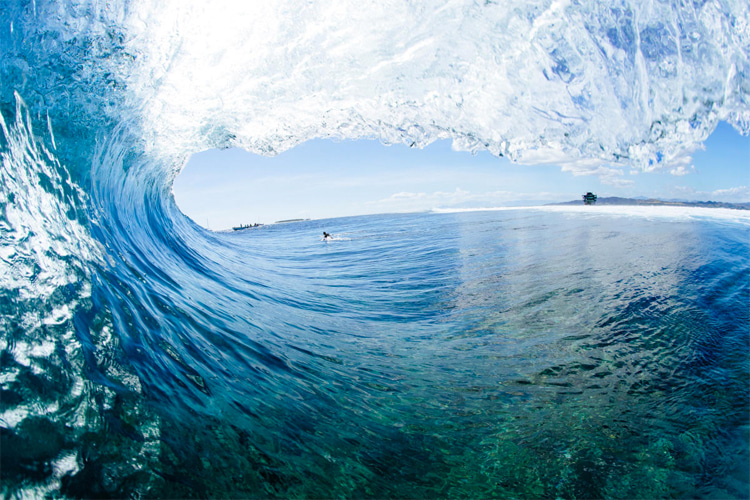

The Point, The Middle and Shish Kebabs
Cloudbreak roars to life a mile off Tavarua and can be divided into three sections: an outside section (The Point), a middle section (The Middle), and an inside section (Shish Kababs).
The Point is the place where bigger yet more rippable waves break, and where surfers can unveil their top-to-bottom surfing skills, fast and deep cutbacks, gouging bottom-turns and abrupt off-the-top moves.
The Middle is a faster section offering high-quality tube time.
At Shish Kebabs, the wave speeds up and becomes extraordinarily hollow.
It’s the peak’s dangerous zone where surfers risk their lives getting barreled in super shallow blue waters breaking over a razor-sharp reef.
Surfers often depend on the wave’s behavior to ride the whole 400-yard Cloudbreak freight train experience.
And it is only possible to connect all three sections when XXL, SSW swells hit the famous Fijian tropical reef-pass break.
Cloudbreak might look blue and perfect, but it hides a few uncomfortable secrets.
Not only the wave itself is harder to tame than it seems, but the lineup is constantly shifting due to strong currents and high-blowing winds, and inhabited by sea snakes, stonefish, and sharks.
If you end up meeting the lively coral for any reason, you’ll need a couple of hours to get to the nearest hospital.
Make sure to apply lots of sunscreen and wear a hat whenever possible. The sun’s UV rays won’t spare you even in paradise.
With a tropical and humid climate, Tavarua’s water temperatures are relatively stable at 80 °F (26 °C).
Whether it’s breaking at two or 25 feet, Cloudbreak is one of the most cherished and consistent waves on the planet.
Nevertheless, it breaks best from April to October thanks to the regular Southern Hemisphere storms and side-offshore winds.
The word “Cloudbreak” derives from the local expression “Nakuru Kuru Malagi,” meaning “thundercloud reef.”
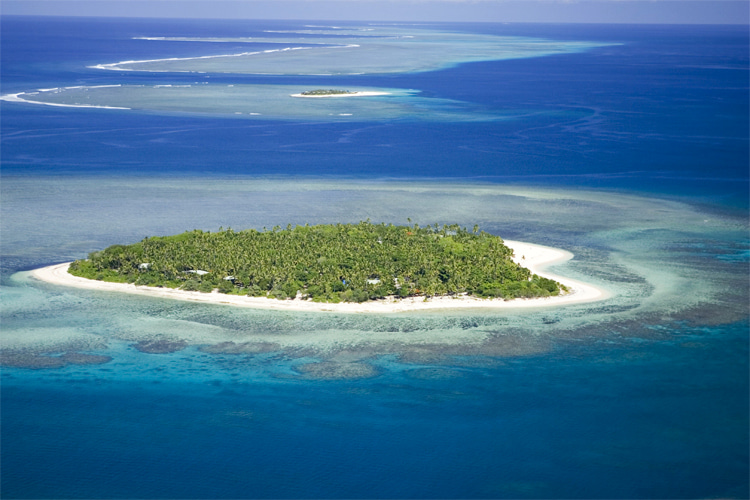

The Discovery of Tavarua
William Finnegan, the author of “Barbarian Days: A Surfing Life,” was one of the first surfers to witness Tavarua’s potential.
In his award-winning book, he recounts his first trip to the magic island in 1978.
“The fishermen who took us across from Nabila had never seen a surfboard before. They refused to believe that we rode waves on them,” wrote Finnegan.
“When we got to Tavarua (…), we could see that the swell had dropped. But our companions would be confirmed in their doubts (…), so I quickly paddled out. The waves were knee-high, but I managed to snag one, and could hear shouts and whistles coming from the beach.”
One of the first surfers to ride Tavarua’s big waves was Dave Clark, a surfer, and entrepreneur from Santa Barbara.
He had been informed by a friend, the American yachtsman John Ritter, who sailed around Tavarua in 1982.
Clark was teaching in American Samoa. Later that year, he and his cousin camped on Tavarua and surfed the local waves for two months.
In 1983, along with Scott Funk, Clark negotiated exclusivity rights with the local authorities and built Tavarua Island Resort, one of the world’s earliest luxury surf camps.
Over the coming years, the resort was dramatically improved.
Guests started having ceiling fans, beach volleyball court, fishing equipment, freshly made meals, and Fijian dancers ready to entertain them at night.
With the help of surf media, the surf retreat became known worldwide, and reservations had to be made months – or years – in advance.
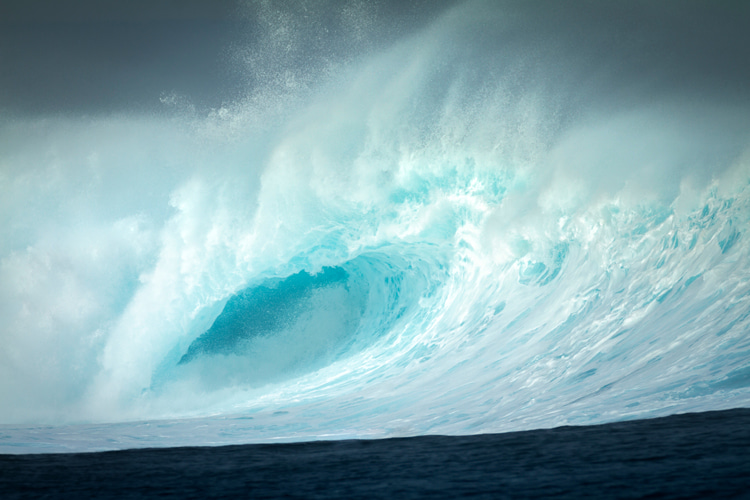

But there were also detractors and critics.
The Tavarua Island Resort was accused of selling out surfing’s essence, privatizing waves, and capping access to a restricted number of wealthy customers.
In 1987, a group of Australian surfers motored into Cloudbreak from nearby Malololailai Island but were told to leave the water by Tavarua staff workers.
After refusing to abandon the Fijian surf break, they were beaten up by the resort’s guests.
Immediately after, Fijians were claiming the rights to access the reef, legal issues involving fishing rights, and national sovereignty talks.
But the Cloudbreak lineup’s gates remained close to the public, and surfing continued to be a privilege of a few guests for a couple of decades more.
The founders of the Tavarua Island Resort worked to protect their investment and mortgages; everyone else lobbied for a change.
In 2010, the Fijian government decided to lift the exclusivity and deprivatized the island’s surf breaks.
Today, the resort is still open for business, and the waves are pumping for everyone.
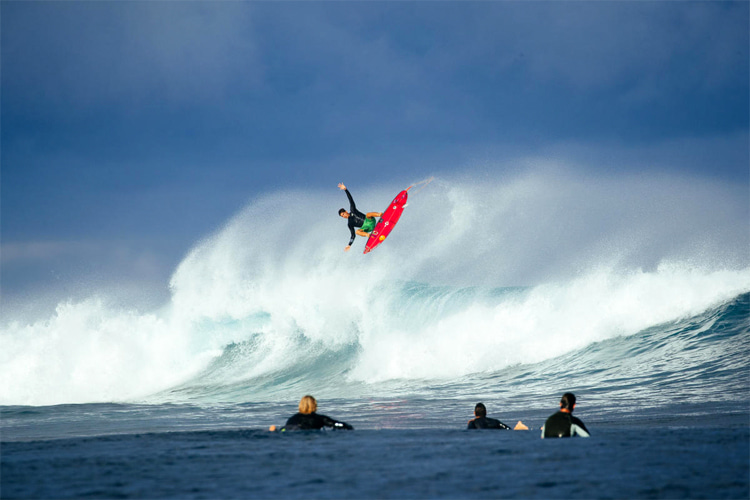

Broken Toes and Close Calls
Kelly Slater has always been in a love affair with Cloudbreak. It’s his favorite wave.
“Tavarua has become a second home to me. I just love this place.”
Slater first went on a surf trip to Tavarua in 1990 – he was 18. And he made his Tavarua debut at Restaurants.
Recently, the Floridian revealed that, at the time, he was invited to surf Cloudbreak by Jeff Booth, Richard Woolcott, and Dan Merkel, but he declined because he was scared to paddle out and didn’t know the reef.
In the following winter, Slater overcame his fears and charged Cloudbreak at its best.
The first competition held in this Fijian dream wave was the Tavarua Tube Riding Classic (1995). Shawn Briley won the contest.
Mark Occhilupo won the first-ever ASP World Tour event at Cloudbreak in 1999. Six years later, Slater won a contest at Restaurants and made a revelation.
“I wanted to move to this place last year, and I almost did,” the 11-time world champion said afterward.
But surfers were not the only ones enjoying and putting their lives on the line at the Fijian reef pass.
In 2011, Australian wave windsurfing specialist Jason Polakow went on a strike mission to Cloudbreak.
The wave sailing addict put on a stellar performance and ended up with a cut above his eye after a wipeout.
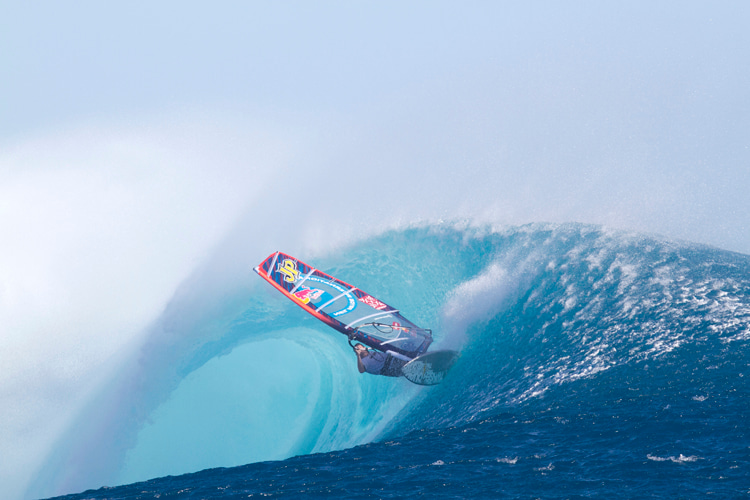

In 2014, Kelly Slater broke a bone on the second and third toes of his left foot at Cloudbreak.
“The foam ball from the lip landing inside the barrel bounced back up and flipped the board into my foot, hyper-extending the toes backward,” he said at the time.
Two years later, Aaron Gold suffered a massive wipeout and nearly drowned at the tropical reef-pass break.
He was found unconscious, and his friends realized he wasn’t breathing for a long time.
After two or three minutes of CPR, he was brought back to life. Gold says that when he wiped out, he wasn’t even concerned.
“The second wave came over, I was right below the surface, and I was still fine. And then, it’s like someone just shut the lights off,” recalled Aaron Gold.
Gold had been technically dead for nearly ten minutes.
Cloudbreak has been considered the best wave in the world, along with Pipeline. But it is as dangerous and unpredictable as its northern sister, Teahupoo.
And that is what makes it so unique and special.
Cloudbreak | The X-Ray
Location: Tavarua, Fiji
Type of Break: Left-hand Reef Pass
Best Swell Direction: SSW Groundswells and W Cyclone Swells
Wave Height: 2-20 Feet
Tide: All Tides
Wind: Light Offshore and Side-Offshore
Bottom: Reef
Experience Level: Advanced, Professional
Best Months: April-October
Access: Boat


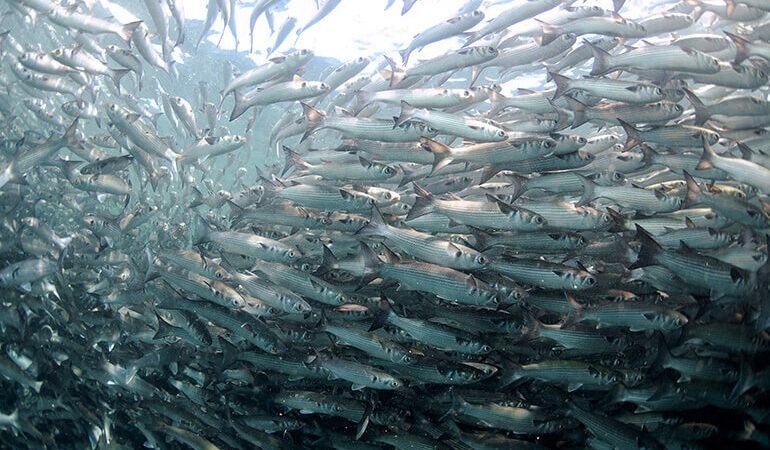

Recent Comments